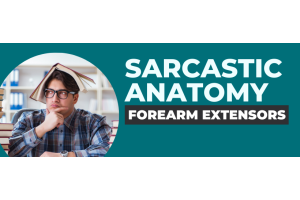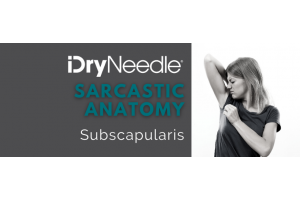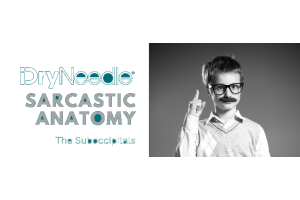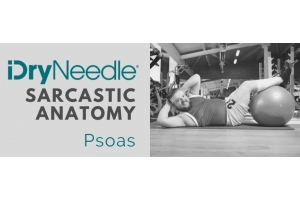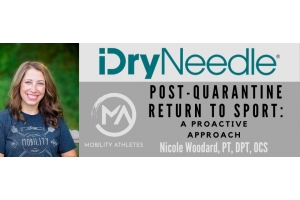

Anatomy.
I hope it would be obvious to say, “knowing the anatomy” of a region or muscle you intend to dry needle is paramount - but that’s exactly what I’m saying. Not necessarily point A to point B origin-insertion anatomy, but the thorough geography and topography of the muscle. Beyond that, what are the physical characteristics, histological properties and patient-specific qualities of that muscle.
Let's think next level anatomy.
Before you even begin palpating a muscle to needle, here are a few things to consider –
- Myotendinous junction – based on your knowledge, where are you expecting this muscle to begin its transition from contractile muscle tissue in to more fibrous tendinous attachment. Depending on your goal, this would guide where you treat along this specific muscl
- Fiber orientation – appreciating which angle or direction the specific fibers within a muscle will traverse should guide your palpation as well as your needle insertion/penetration angle. Some good muscles to practice this on would be VMO, Vastus Lateralis, deltoid or infraspinatus.
- Neural supply – beyond using landmarks to identify where neurovascular tissue physically resides, think what affect you may have on treating a specific tissue both in peripheral nerve supply and myotomal central innvervation. Why? Because we have an influence on the entire supply when we elicit a response from local tissue. With that natural twitch response signifying an H-like spinal cord reflex, we have an afferent signal returning with his efferent buddies.
As a dry needling clinician employing a more invasive intramuscular technique, being an anatomical expert is a must. Try re-acquainting yourself with some of the didactic info from this list and see if it improves your technique.
Thanks for reading - feel free to comment, share, or write sarcastic remarks below!
Otherwise follow me on IG or Twitter @dptwithneedles...do it.
Paul Killoren PT, DPT is a physical therapist who instructs Level 1 and Level 2 coursework with Kinetacore Education, and is a member of US Dry Needling and Physio Products (iDryNeedle). Editorials expressed on this blog are his own and do not represent a specific organization.
_________________________________________________________________
DISCLAIMER - Dry needling is an advanced technique to be performed by properly licensed and training clinicians. Do not attempt if not trained. Tips provided are for currently practicing clinicians to consider.





